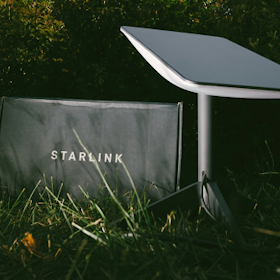
IP stands for “Internet Protocol,” and an IP address, which is different for everyone, distinguishes devices like laptops, desktop computers, and smartphones connected to the internet. Your internet service provider (ISP) assigns you your IP address, which enables you to search for something on the internet and bring up those results on your particular device.
Your device has two IP addresses—a public one and a private one. Finding your public IP address is quick and simple, whereas finding your private IP address takes a few more steps.
How Do I Find My Public IP Address?
Your public or external IP address communicates with and identifies your device to all of the internet. This type of IP address allows many devices to communicate with one another.
Finding your public IP address is easy. All you have to do is Google “What is my IP address?” and you will find your public IP address at the top of the search results.
How Do I Find My Private IP Address?
Your private or internal IP address communicates with and connects to your personal router. The process for finding your private IP address differs depending on the type of device you’re using.
On Windows 11
If you are using Windows 11 operating system, follow these steps to determine your local IP address:
- Click the Start menu.
- Choose "Settings."
- Select "Network & internet" on the left-hand side.
- Click "Properties" at the top center of the screen.
You will see both your IPv4 and IPv6 listed, both of which are private IP addresses. The difference between IPv4 and IPv6 is that IPv6 is larger and more advanced. It is slowly replacing IPv4 because of its ability to provide countless unique IP addresses, while IPv4 has a finite number.
On Windows 10
If you are using Windows 10 operating system, here’s how to find your private IP address on your device:
- Right-click on the Windows logo.
- Click "Settings" from the list of options.
- Select "Network & internet" in the top row.
- Choose either "Ethernet" or "Wi-Fi" on the left-hand side.
- Select "Network."
- You will see your private IP address under "IPv4 address."
- If you are on Wi-Fi, click "Properties," then scroll down to find your IP address.
On a Mac
On an Apple Macbook, you can find your private IP address by following these steps:
- Click on the Apple icon in the upper lefthand corner of the screen.
- Select "System Preferences."
- Click "Network."
- Under the network status, you'll see what Wi-Fi you are connected to and your private IP address.
On an iPhone or iPad
If you are using an Apple iPhone or iPad, you can find your local IP address in just a few steps. Simply click “Settings” then select your Wi-Fi name. You will see your private IP address under “IPv4 Address.”
On an Android or tablet
When it comes to finding your IP address, Android users have it just as easy as iPhone users. Follow these steps:
- Select "Settings."
- Choose "About phone."
- If you have a Samsung phone, click "Status information."
- If you have a different Android device, you may see your IP address right away without clicking anything.
What Do You Need Your IP Address For?
You may need to know your IP addresses for many reasons, such as:
- Setting up and adding a printer or other devices
- Troubleshooting internet and network issues
- Setting up a file server
Your public IP address enables others to track what you do online, such as browsing, shopping, sending emails, and chatting. It also reveals your location. Advertisers use your IP address to give you personalized ads based on your browsing history as well as your location.
Many people don’t want others to know their location or activity, so they use a virtual private network (VPN) for more security and privacy. There are many free and paid VPNs out there, so you’ll want to compare options to find the right one for your needs.
Related Articles
Find Better Internet and Phone Plans
Hundreds of internet plans unpacked. All the facts. No surprises.
Internet Providers by Provinces and Territories
- Internet in Alberta
- Internet in British Columbia
- Internet in Manitoba
- Internet in New Brunswick
- Internet in Newfoundland and Labrador
- Internet in Northwest Territories
- Internet in Nova Scotia
- Internet in Nunavut
- Internet in Ontario
- Internet in Prince Edward Island
- Internet in Quebec
- Internet in Saskatchewan
- Internet in Yukon Territory





























